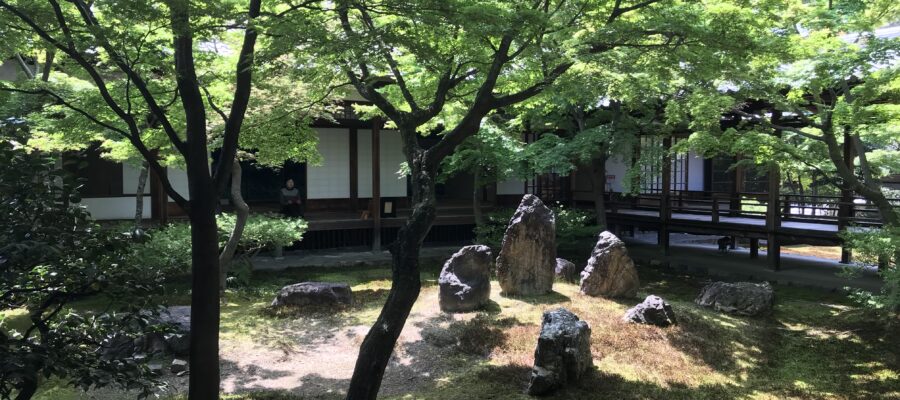花見小路の突き当り
京都観光で必ず行く祇園の花見小路の突き当りにある建仁寺。祇園での風情を楽しんだ後、建仁寺を寄らずに帰るのは非常にもったいないと思います。開山は臨済宗を開いた栄西で、庭、絵画、建物のどれをとっても見所十分なお寺です。
潮音庭の三尊石
まずは、潮音庭を訪れました。本坊中庭にあり、中央に三尊石が建っています。関西在住の方で京阪電鉄を利用される方は、よくポスターでイメージキャラクターの「おけいはん」がこの庭を眺める姿を、思い出すのではないでしょうか。
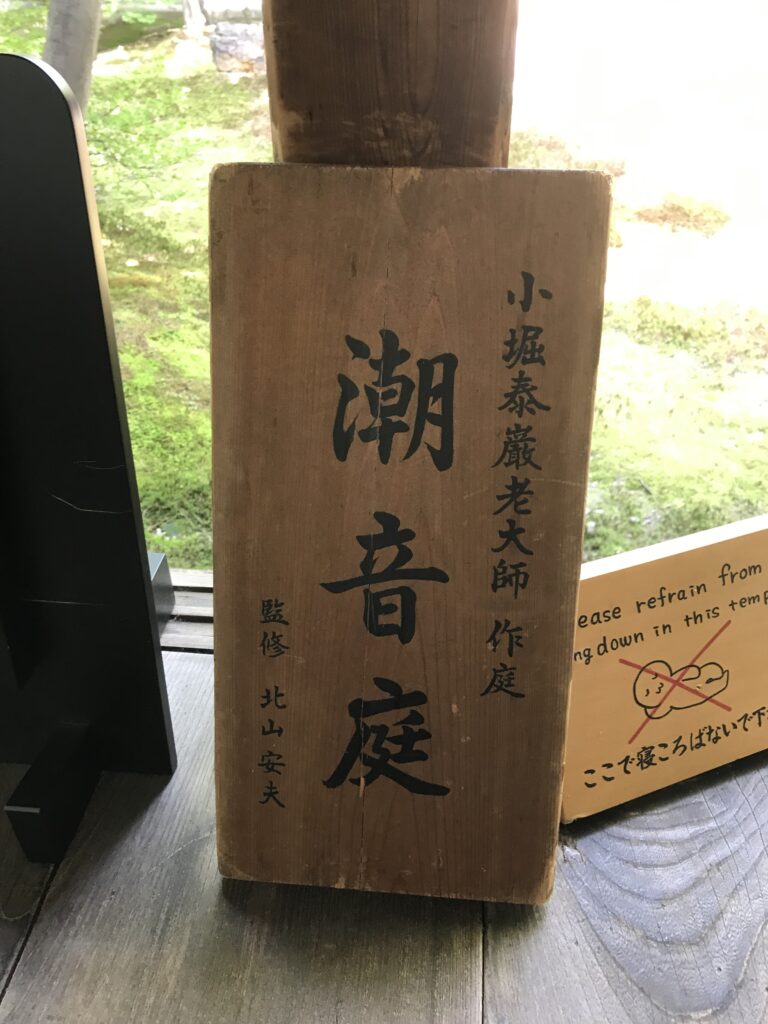
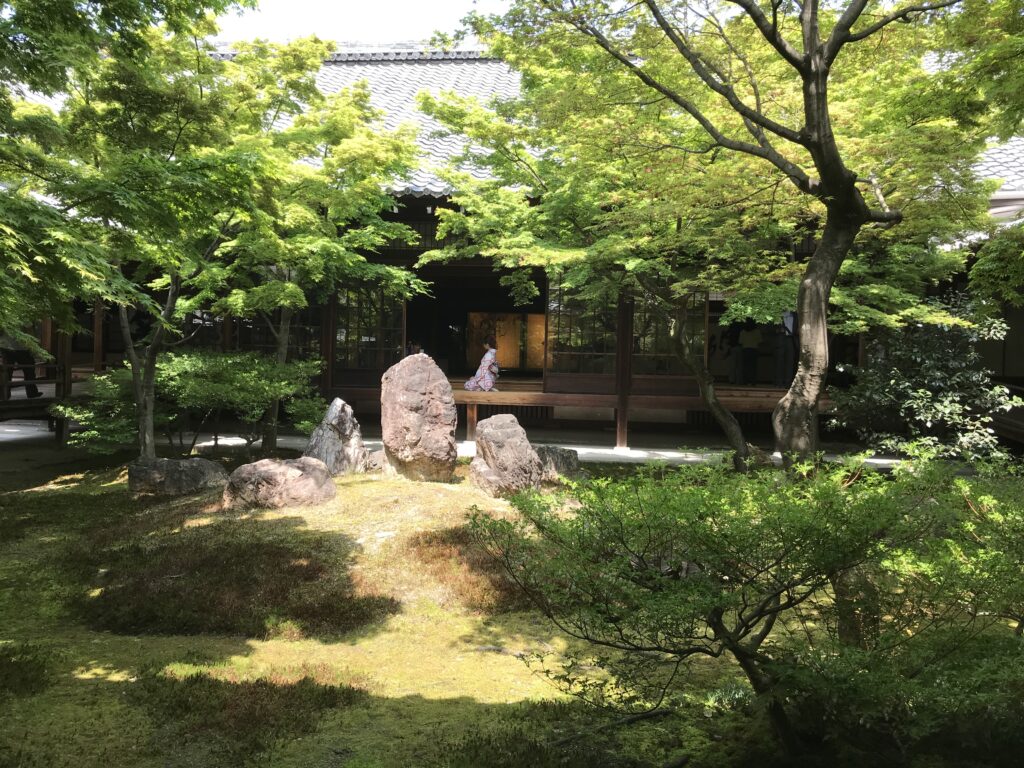
この三尊石は中庭に配置されているため、360度どこらでも見られてしまいます。そのため、石や配置にこだわりがあり、どの位置から見ても美しく見えるように置かれていると聞きました。中庭を見ながら建物の縁を一周しましたが、果たして、どこから見ても、その美しさを楽しめることがわかります。
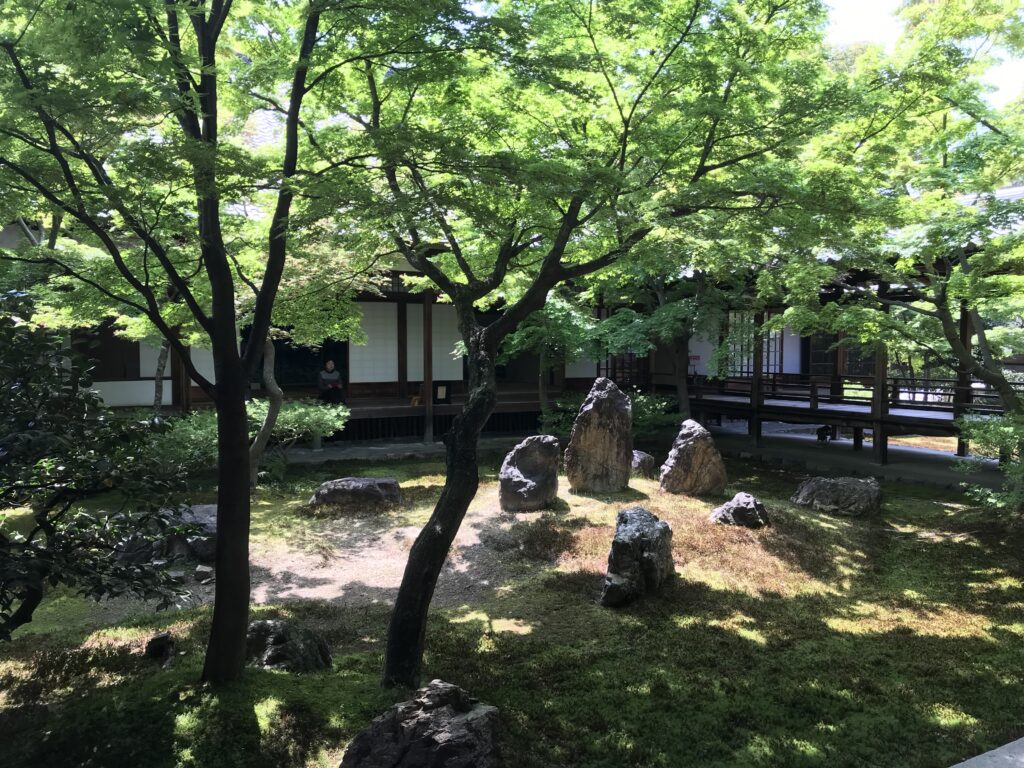
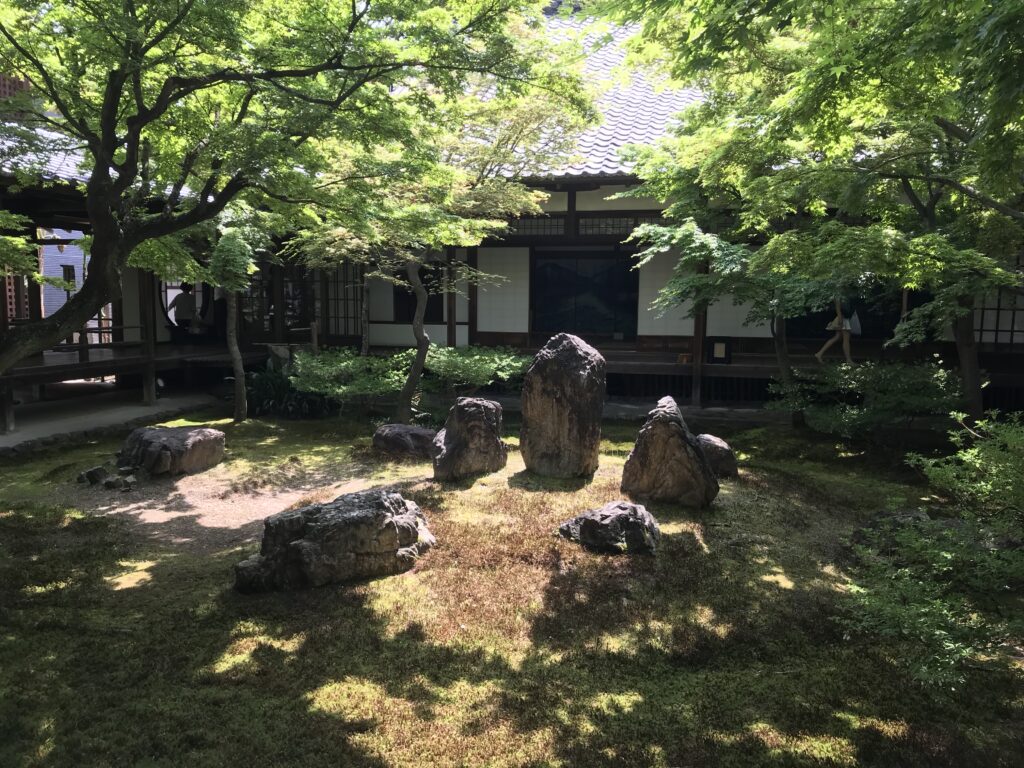
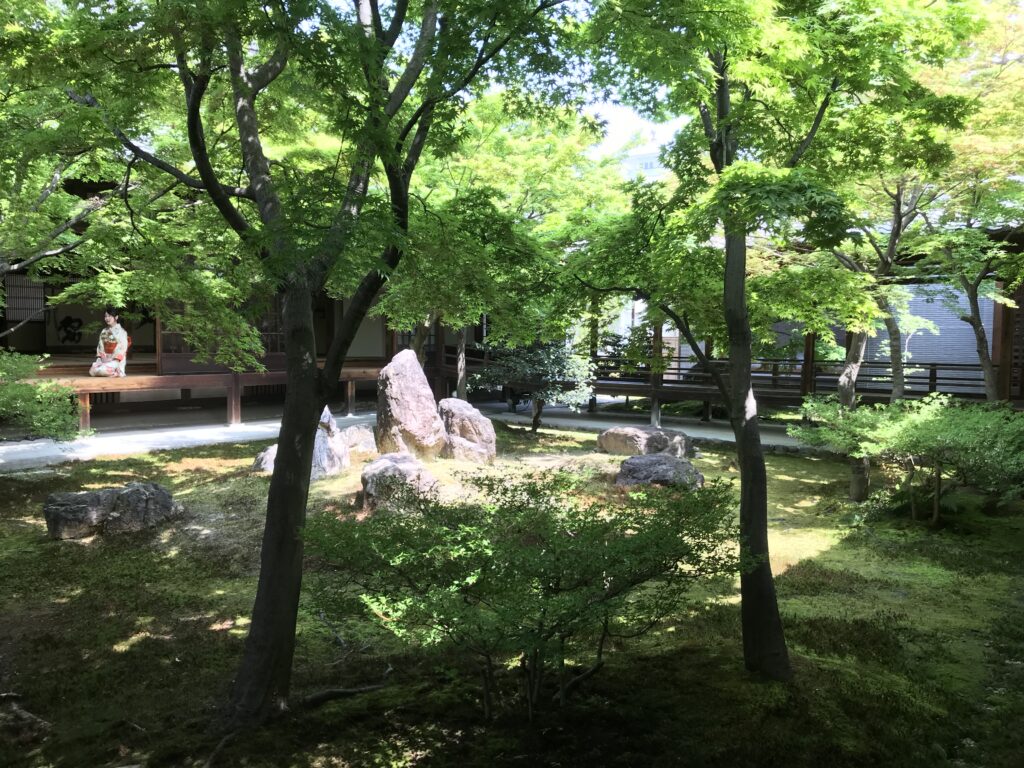
大雄苑と茶庭
次は、方丈の庭園「大雄苑」に移りました。白砂に緑苔と巨岩を配した実に雄大な庭園です。眺めていると左端に植えられた松に突風が辺り、黄色い花粉がバッ―と浮き上がりました。その光景を見ただけで、花粉症の私は、全身がかゆくなるような感覚に襲われました。松もあれほど花粉を出すのを知って、少しショックを受けました。
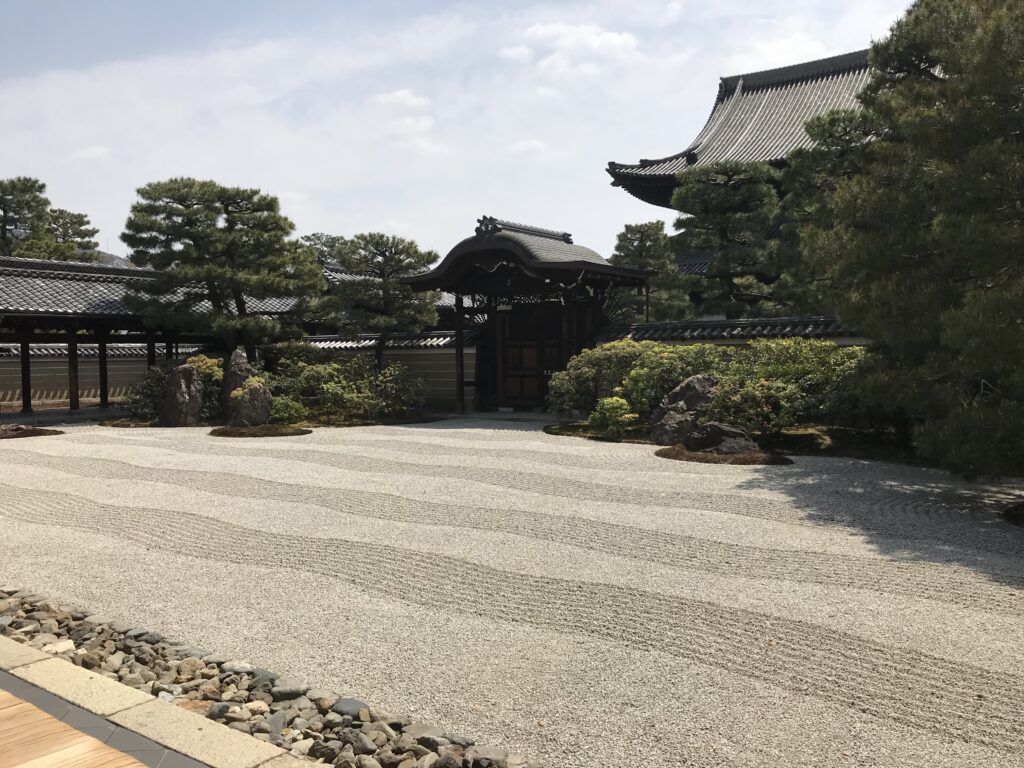
スリッパを借りて、茶庭と茶室の辺りも歩いてきました。さすがに喫茶を日本に普及させて栄西のお寺です。歩いて心地のよい茶庭で、お寺からいただした冊子のとおり、ここにいるだけで、こころ静かに自らと向き合える、そんなお寺でした。(完)
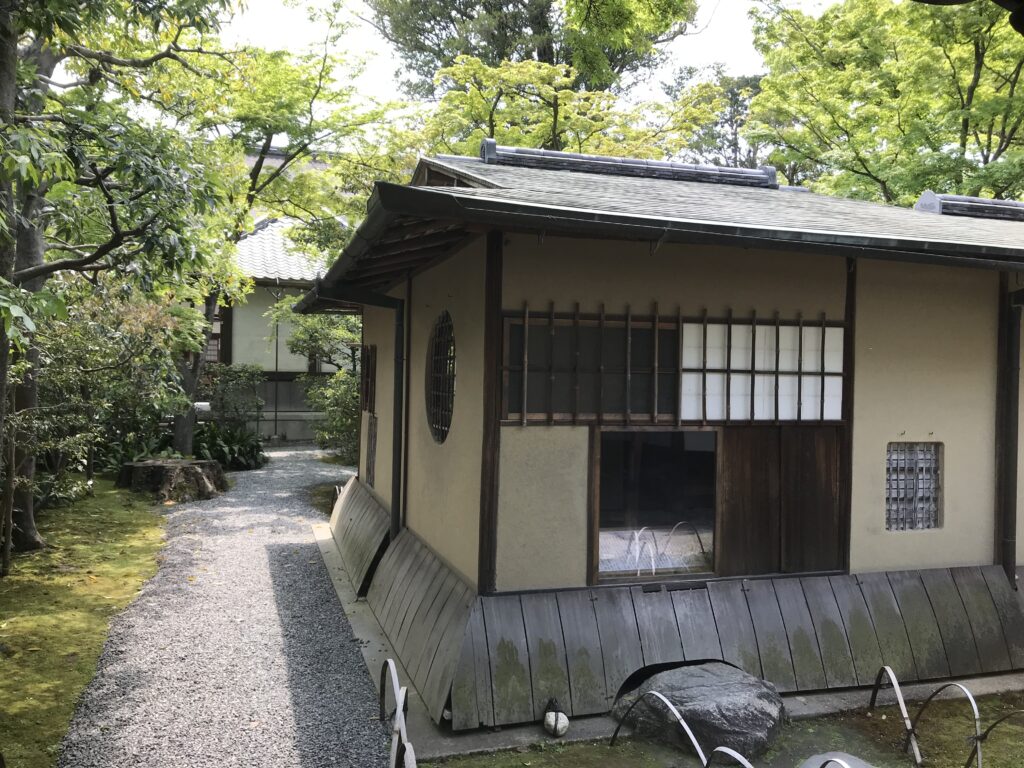
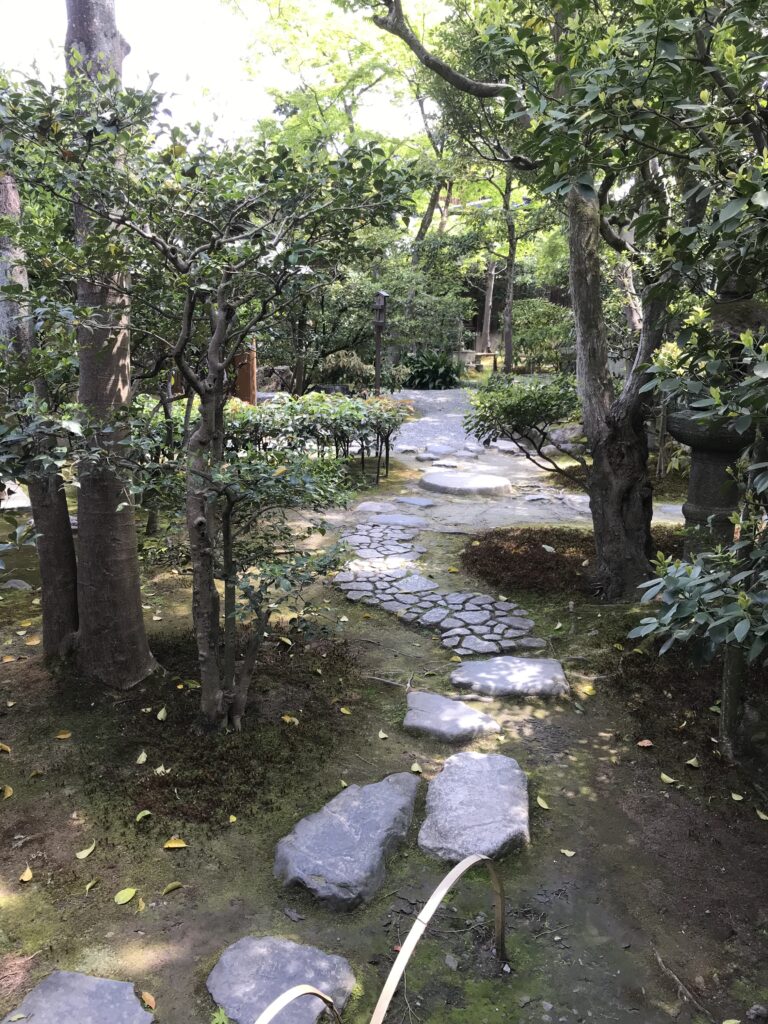
建仁寺の御朱印
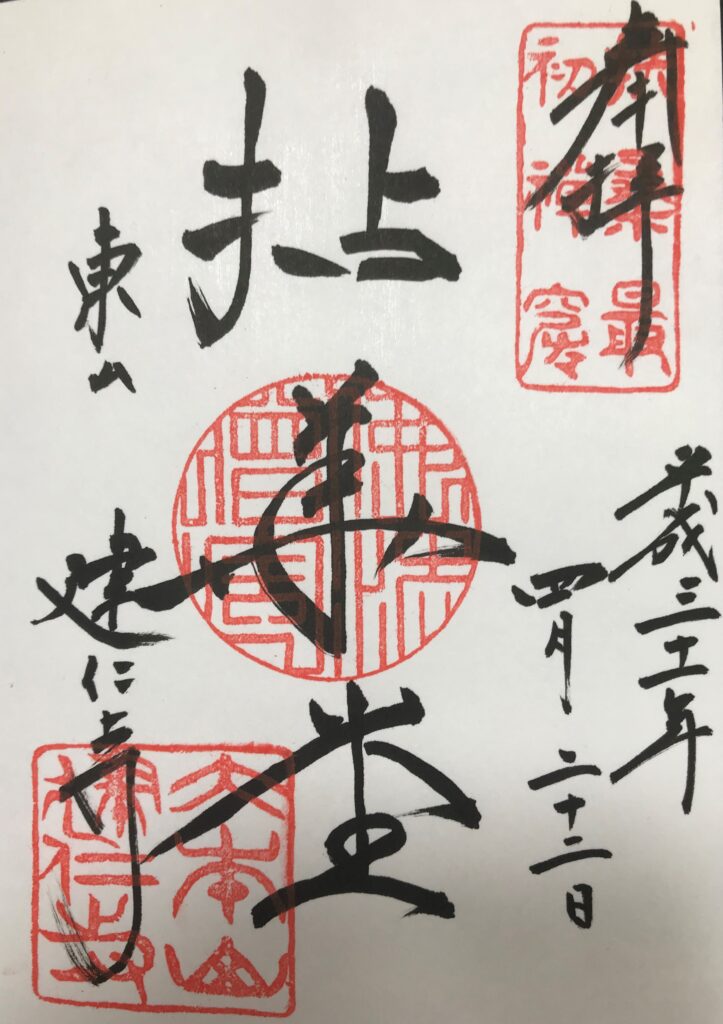
Kenninji Temple (1) (English)
At the end of Hanamikoji Street
Kenninji Temple is located at the end of Hanami-koji Street in Gion, which is a must-visit during sightseeing in Kyoto. After enjoying the atmosphere of Gion, it would be a shame to leave without stopping at Kenninji Temple. The temple was founded by Eisai, the founder of the Rinzai sect of Buddhism, and the gardens, paintings, and buildings are all worth seeing.
The three precious stones in the Choin garden
First, I visited the Choin garden. It is located in the courtyard of the main monastery, with the Sanson (three precious) stones standing in the center. If you live in the Kansai region and use the Keihan Electric Railway, you may remember the image of the image character “Okei-han” looking at this garden on posters.
Since these three stones are placed in the courtyard, they can be seen from anywhere in 360 degrees. For this reason, I was told that the stones and their placement were carefully chosen so that they would look beautiful no matter where they were viewed. I circled around the edge of the building looking at the courtyard, and it was clear that no matter where you look, you can enjoy the beauty of the building.
Daiyuyen Garden and Tea Garden
Next, I moved on to the Hojo’s garden, “Daiyuen”. It was a truly magnificent garden with white sand, green moss, and huge rocks. As I was looking at the garden, a gust of wind blew on a pine tree planted on the left edge of the garden, causing yellow pollen to float up. As a hay fever sufferer, I felt as if my whole body was itching just from the sight of it. I was a little shocked to learn that pine trees also produce so much pollen.
I borrowed slippers and walked around the tea garden and the tea house. This is indeed the temple of Eisai, who popularized the tea ceremony in Japan. The tea garden was comfortable to walk around, and as the booklet I received from the temple said, just by being here, I could quietly face myrself. (End)
Temple de Kenninji (1) (Français)
Au bout de la rue Hanamikoji
Le temple Kenninji est situé au bout de la rue Hanami-koji à Gion, qui est une visite incontournable lors d’une excursion à Kyoto. Après avoir profité de l’atmosphère de Gion, il serait dommage de partir sans s’arrêter au temple Kenninji. Le temple a été fondé par Eisai, le fondateur de la secte Rinzai du bouddhisme, et les jardins, les peintures et les bâtiments valent tous la peine d’être vus.
Les trois pierres précieuses dans le jardin Choin
Tout d’abord, j’ai visité le jardin Choin. Il est situé dans la cour du monastère principal, avec les pierres Sanson (trois pierres précieuses) au centre. Si vous vivez dans la région du Kansai et que vous utilisez le chemin de fer électrique Keihan, vous vous souvenez peut-être de l’image du personnage “Okei-han” regardant ce jardin sur des affiches.
Comme ces trois pierres sont placées dans la cour, elles peuvent être vues de n’importe où sur 360 degrés. C’est pourquoi on m’a dit que les pierres et leur emplacement avaient été soigneusement choisis pour qu’elles soient belles quel que soit l’endroit où on les regarde. J’ai fait le tour du bâtiment en regardant la cour, et il était clair que peu importe où l’on regarde, on peut apprécier la beauté du bâtiment.
Jardin de Daiyuyen et jardin de thé
Ensuite, je me suis rendu dans le jardin du Hojo, “Daiyuen”. C’était un jardin vraiment magnifique avec du sable blanc, de la mousse verte et d’énormes rochers. Alors que je regardais le jardin, une rafale de vent a soufflé sur un pin planté sur le bord gauche du jardin, faisant remonter du pollen jaune. En tant que personne souffrant du rhume des foins, j’ai eu l’impression que tout mon corps me démangeait rien qu’à sa vue. J’ai été un peu choquée d’apprendre que les pins produisent également autant de pollen.
J’ai emprunté des chaussons et me suis promené dans le jardin de thé et dans la maison de thé. Il s’agit en effet du temple d’Eisai, qui a popularisé la cérémonie du thé au Japon. Il était agréable de se promener dans le jardin de thé et, comme le disait la brochure que j’ai reçue du temple, le simple fait d’être ici m’a permis de faire tranquillement face à moi-même. (Fin)
